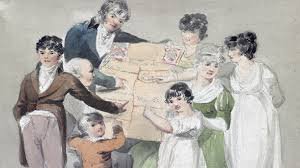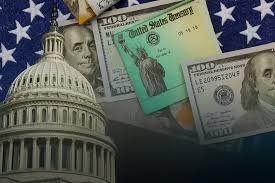Regency Era A Deep Dive into Culture, Fashion, and Society

The Regency Era is a fascinating period in British history, defined by its distinctive cultural, social, and political changes. Spanning from 1811 to 1820, this era is named after the Prince Regent, who ruled in place of his father, King George III. The Regency Era is often romanticized in literature and film, celebrated for its elegant fashion, intricate social customs, and significant artistic achievements. In this article, we will explore various aspects of the Regency Era, including its historical context, societal norms, fashion trends, literature, and its lasting impact on modern culture.
Historical Context of the Regency Era
The Regency Era emerged during a time of great turmoil in Britain. The Napoleonic Wars were in full swing, creating political instability and economic strain. The Prince Regent’s rule was marked by a desire to escape the shadow of war, leading to a flourishing of arts and culture. The social fabric of Britain began to shift as the middle class gained more influence, setting the stage for the eventual social reforms that would follow.
The Political Landscape
During the Regency Era, Britain was engaged in conflicts that shaped its future. The impact of the French Revolution and subsequent wars against Napoleon affected public opinion and political structures. The Prince Regent himself was often criticized for his extravagant lifestyle while many of his subjects faced hardship. This duality of opulence and struggle became a hallmark of the Regency Era.
Social Changes
The Regency Era witnessed a transition in social dynamics. The rise of the bourgeoisie brought about changes in class structures, with increasing importance placed on wealth rather than aristocratic lineage. This shift was reflected in the literature and art of the time, showcasing a more diverse array of characters and experiences. The role of women also began to evolve, as they started to assert their presence in society, pushing boundaries in education and social norms.
Fashion of the Regency Era

Fashion during the Regency Era is one of the most captivating aspects of this period. The style was characterized by elegance, simplicity, and a nod to classical influences. The fashions of the time reflected broader cultural trends and the changing roles of women in society.
Women’s Fashion
In the Regency Era, women’s fashion shifted dramatically from the opulent styles of the previous decades. High-waisted gowns, often made from lightweight fabrics like muslin, became popular. The empire silhouette accentuated the natural figure and allowed for greater freedom of movement. Dresses featured short sleeves and were often adorned with delicate embroidery or lace, emphasizing a woman’s femininity.
Accessories also played a crucial role in the fashion of the Regency Era. Bonnets, gloves, and shawls were essential items that completed a woman’s outfit. The importance of social gatherings meant that women used fashion as a means to express their status and taste.
Men’s Fashion
Men’s fashion in the Regency Era was equally significant, characterized by tailored coats, waistcoats, and breeches. The emphasis was on refinement and elegance, with fabrics such as silk and wool being the most sought after. Cravats and neckties became fashionable, showcasing individuality and personal style. The overall look was one of sophistication, mirroring the social aspirations of the time.
Literature of the Regency Era
The Regency Era was a golden age for literature, producing some of the most celebrated authors in British history. This period saw the rise of the novel as a dominant literary form, with works that explored social themes, romance, and morality.
Jane Austen and the Regency Era
No discussion of Regency Era literature would be complete without mentioning Jane Austen. Her novels, such as “Pride and Prejudice,” “Sense and Sensibility,” and “Emma,” offer insightful commentary on the social norms of the time. Austen’s sharp wit and keen observations of human behavior provide a window into the lives of both men and women in the Regency Era. Her exploration of marriage, class, and gender continues to resonate with readers today.
The Gothic Novel
Another notable literary trend during the Regency Era was the popularity of the Gothic novel. Authors like Ann Radcliffe and Matthew Lewis captivated audiences with tales of mystery, horror, and the supernatural. These stories often featured strong, independent heroines and explored themes of power and vulnerability, reflecting the societal tensions of the time.
Arts and Culture of the Regency Era
The Regency Era was also a time of artistic flourishing. The period saw advancements in various art forms, including painting, music, and theater. This cultural explosion was fueled by the desire to escape the grim realities of war and political strife.
Visual Arts
In painting, artists like J.M.W. Turner and John Constable emerged as prominent figures. Turner’s dramatic landscapes and Constable’s serene rural scenes captured the essence of the British landscape, evoking emotional responses from viewers. The use of light and color in their works reflected the Romantic ideals that were gaining popularity during the Regency Era.
Music and Theater
The Regency Era also witnessed significant developments in music. Composers like Beethoven and Chopin began to influence the musical landscape, with their innovative approaches to composition. The theater flourished as well, with playwrights such as Richard Brinsley Sheridan captivating audiences with witty comedies and dramatic works.
The Impact of the Regency Era on Modern Culture

The Regency Era has left an indelible mark on modern culture, inspiring countless adaptations in literature, film, and fashion. Its themes of romance, societal norms, and the struggle for individuality continue to resonate with contemporary audiences.
Film and Television Adaptations
Today, the Regency Era is frequently romanticized in film and television. Adaptations of Austen’s works, such as “Pride and Prejudice” and “Sense and Sensibility,” have brought the elegance and social complexities of the time to life for new generations. These adaptations often emphasize the tension between personal desires and societal expectations, a theme that remains relevant.
Influence on Fashion
Fashion inspired by the Regency Era can still be seen in modern clothing. Elements such as empire waistlines and delicate fabrics are occasionally revived in contemporary collections, particularly in formal wear. The timeless elegance of Regency Era fashion continues to influence designers, ensuring its place in the fashion canon.
Also read Ontpress .com Your Ultimate Resource for Digital Solutions
Conclusion
The Regency Era was a transformative period in British history, marked by significant social, cultural, and political changes. Its influence can be seen in various aspects of modern life, from literature and film to fashion and social norms. As we continue to explore and appreciate the complexities of this fascinating time, the legacy of the Regency Era remains ever-present, reminding us of the enduring power of art, literature, and social evolution.
In summary, the Regency Era is not merely a historical period but a rich tapestry of human experience that continues to inspire and captivate. Through its literature, fashion, and cultural developments, we can gain valuable insights into the past, offering a deeper understanding of our present and future. The Regency Era serves as a testament to the resilience of creativity and the ever-evolving nature of society.







